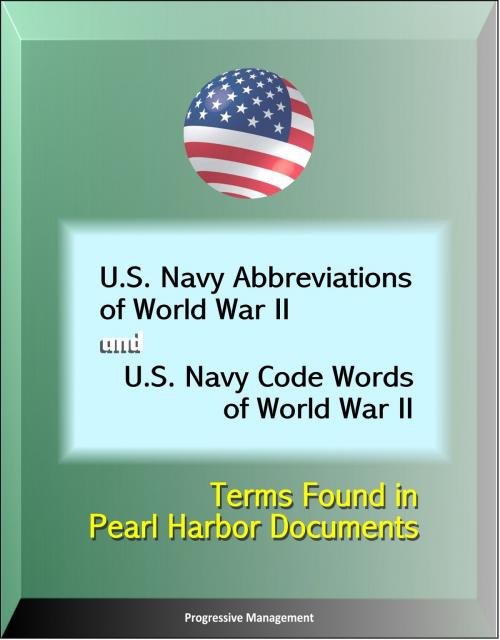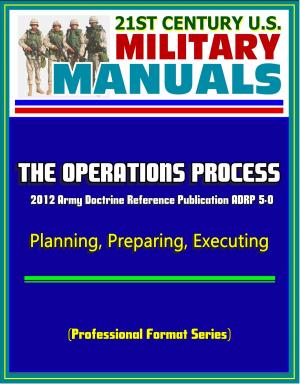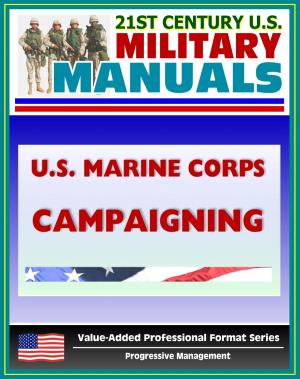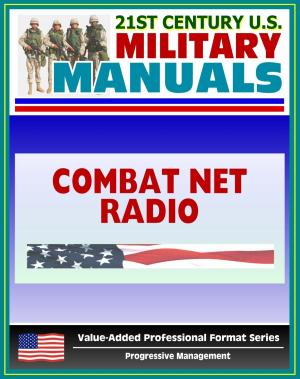U.S. Navy Abbreviations of World War II and U.S. Navy Code Words of World War II: Terms Found in Pearl Harbor Documents
Nonfiction, History, Military, Naval, World War II| Author: | Progressive Management | ISBN: | 9781311920324 |
| Publisher: | Progressive Management | Publication: | January 26, 2014 |
| Imprint: | Smashwords Edition | Language: | English |
| Author: | Progressive Management |
| ISBN: | 9781311920324 |
| Publisher: | Progressive Management |
| Publication: | January 26, 2014 |
| Imprint: | Smashwords Edition |
| Language: | English |
A companion to our Pearl Harbor Encyclopedia, this unique document provides definitions for thousands of Navy abbreviations and code words used during the period of Pearl Harbor and later during World War II.
The roads around Pearl Harbor were alive in wartime with vehicles marked "AdComPhibsPac." The waters of Casco Bay were plowed by small boats bearing at their bows the mystic inscriptions, "DesLant" or "SOPA." In a single dim corridor of the Navy Department, "OIR" and "OR&I" indicated adjacent but quite distinct offices of "EXOS."
Altogether the Navy produced, officially or unofficially, thousands of such abbreviations during the war. A few, such as "SecNav," "CominCh," "CNO," "BuPers," and "J.g.," were well-known throughout the service. most of the rest, however, were thrown around in familiar fashion by those immediately concerned, but might be thoroughly mystifying to the rest of the Naval Establishment. it would be difficult to find a person who could even approach a perfect score in identifying "CAFAC," "JOSCO," and "OMPUS," to say nothing of "COLanForASCU," "LanCraBNAW," "NOBDUCHAR," and "PaCorNaLong," even while the war was in progress; as it grows more distant, those symbols will become even less familiar.
For the benefit of naval personnel, officials, and scholars who may have occasion to consult correspondence, reports and historical narratives in which such abbreviations occur, it has seemed desirable to prepare a glossary identifying the principal terms likely to be encountered in such documents. The need for such a glossary was indicated by the preparation of various partial lists during the war; none of these, however, covered more than a fraction of the whole. The glossary includes most of the principal Navy, marine Corps and Coast Guard abbreviations in use from 1940 to the end of 1946. Four particular categories have been given in great detail: vessel types, naval aircraft types, commissioned and enlisted personnel designations, and Fleet Post Office numbers. The vessel types, while numerous, are clear cut. For aircraft, the nickname as well as the official designation is given, and the general meaning of the initials indicating function and manufacturer. The personnel designations were changed several times during the period, particularly for reserve officers; these are all included, with cross-referencing to avoid needless repetition. For purposes of security, the names of overseas stations and units were frequently omitted not only from envelope addresses but also from the contents; without the assistance of the list reproduced under "Navy Numbers," it would be difficult to identify the source of letters which simply had the printed headings "Naval District Headquarters, Navy No. 121, FPO New York" or "Naval Operating Base, Navy No. 1504, FPO San Francisco." The general abbreviations fall into two major types. "Commander Philippine Sea Frontier," for instance, was sometimes contracted to "ComPhilSeaFron" and at other times to "CPSF." The former type was whimsically compared by one columnist to the practice of the Russians with their "Politburo" or "Amtogr." Such contractions are much easier to deduce than the more numerous combinations of initials which follow the British practice. Some abbreviations received an official blessing and were incorporated in aviation, communications, personnel or technical lists or manuals; others were often improvised and might vary with the individual taste of the abbreviator. "Service Squadron," for instance, appeared variously as "Seron," "Serron," "Serbon" and "Servron." Those four all appear in this glossary, but naturally it has been out of the question to include all variations.
A companion to our Pearl Harbor Encyclopedia, this unique document provides definitions for thousands of Navy abbreviations and code words used during the period of Pearl Harbor and later during World War II.
The roads around Pearl Harbor were alive in wartime with vehicles marked "AdComPhibsPac." The waters of Casco Bay were plowed by small boats bearing at their bows the mystic inscriptions, "DesLant" or "SOPA." In a single dim corridor of the Navy Department, "OIR" and "OR&I" indicated adjacent but quite distinct offices of "EXOS."
Altogether the Navy produced, officially or unofficially, thousands of such abbreviations during the war. A few, such as "SecNav," "CominCh," "CNO," "BuPers," and "J.g.," were well-known throughout the service. most of the rest, however, were thrown around in familiar fashion by those immediately concerned, but might be thoroughly mystifying to the rest of the Naval Establishment. it would be difficult to find a person who could even approach a perfect score in identifying "CAFAC," "JOSCO," and "OMPUS," to say nothing of "COLanForASCU," "LanCraBNAW," "NOBDUCHAR," and "PaCorNaLong," even while the war was in progress; as it grows more distant, those symbols will become even less familiar.
For the benefit of naval personnel, officials, and scholars who may have occasion to consult correspondence, reports and historical narratives in which such abbreviations occur, it has seemed desirable to prepare a glossary identifying the principal terms likely to be encountered in such documents. The need for such a glossary was indicated by the preparation of various partial lists during the war; none of these, however, covered more than a fraction of the whole. The glossary includes most of the principal Navy, marine Corps and Coast Guard abbreviations in use from 1940 to the end of 1946. Four particular categories have been given in great detail: vessel types, naval aircraft types, commissioned and enlisted personnel designations, and Fleet Post Office numbers. The vessel types, while numerous, are clear cut. For aircraft, the nickname as well as the official designation is given, and the general meaning of the initials indicating function and manufacturer. The personnel designations were changed several times during the period, particularly for reserve officers; these are all included, with cross-referencing to avoid needless repetition. For purposes of security, the names of overseas stations and units were frequently omitted not only from envelope addresses but also from the contents; without the assistance of the list reproduced under "Navy Numbers," it would be difficult to identify the source of letters which simply had the printed headings "Naval District Headquarters, Navy No. 121, FPO New York" or "Naval Operating Base, Navy No. 1504, FPO San Francisco." The general abbreviations fall into two major types. "Commander Philippine Sea Frontier," for instance, was sometimes contracted to "ComPhilSeaFron" and at other times to "CPSF." The former type was whimsically compared by one columnist to the practice of the Russians with their "Politburo" or "Amtogr." Such contractions are much easier to deduce than the more numerous combinations of initials which follow the British practice. Some abbreviations received an official blessing and were incorporated in aviation, communications, personnel or technical lists or manuals; others were often improvised and might vary with the individual taste of the abbreviator. "Service Squadron," for instance, appeared variously as "Seron," "Serron," "Serbon" and "Servron." Those four all appear in this glossary, but naturally it has been out of the question to include all variations.















